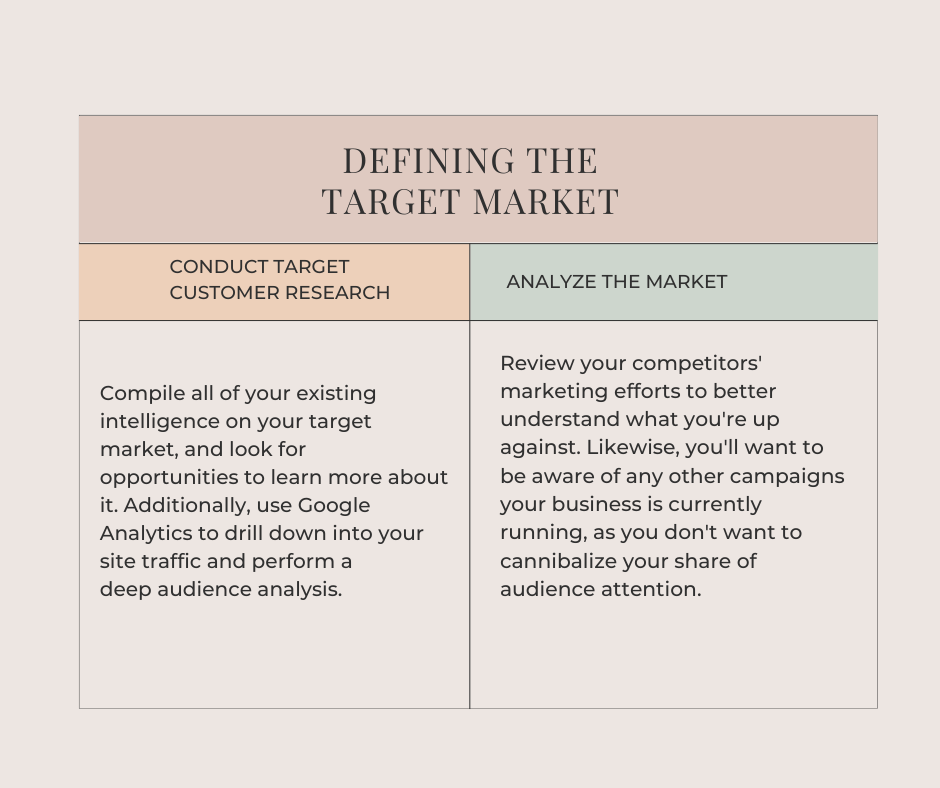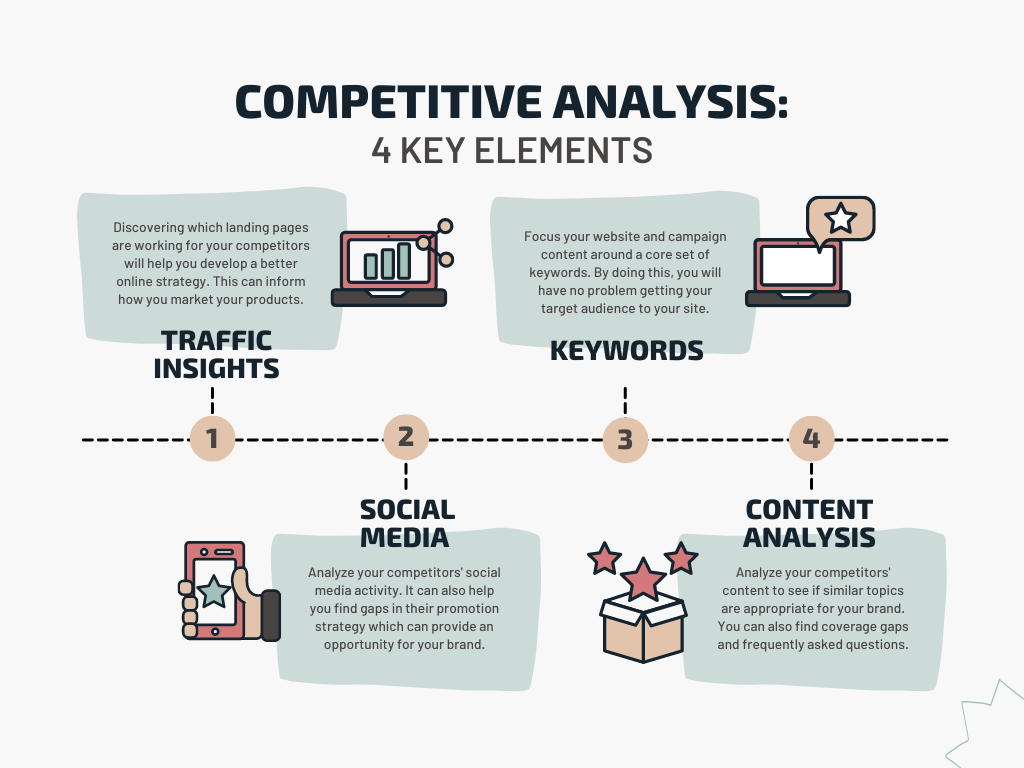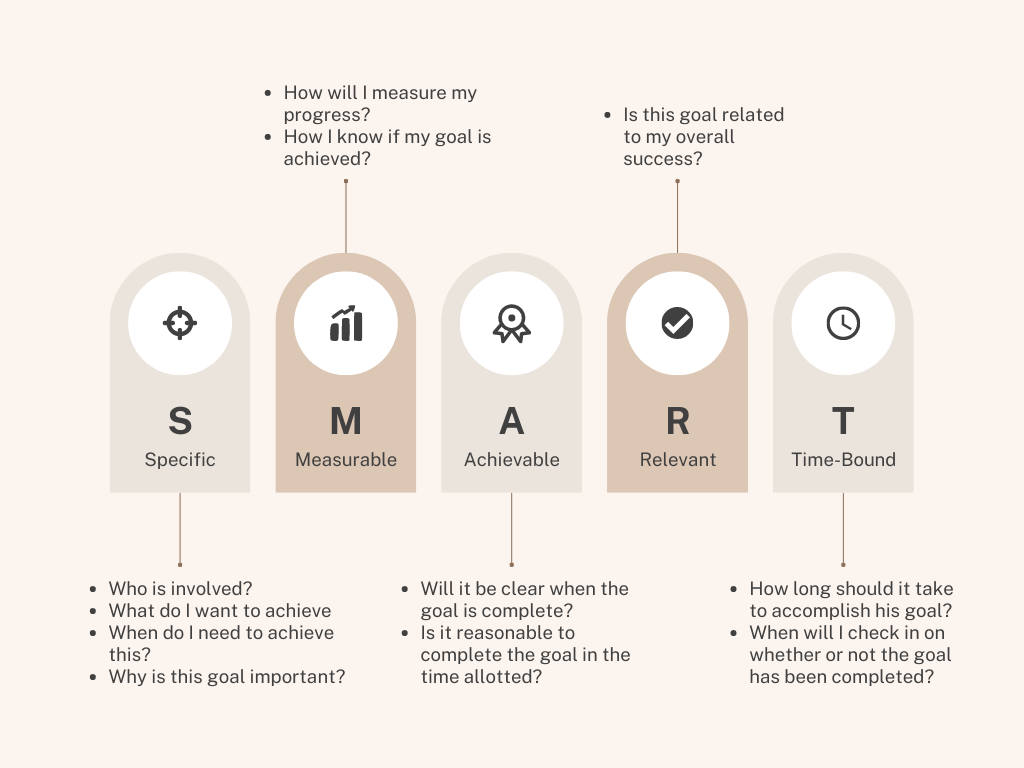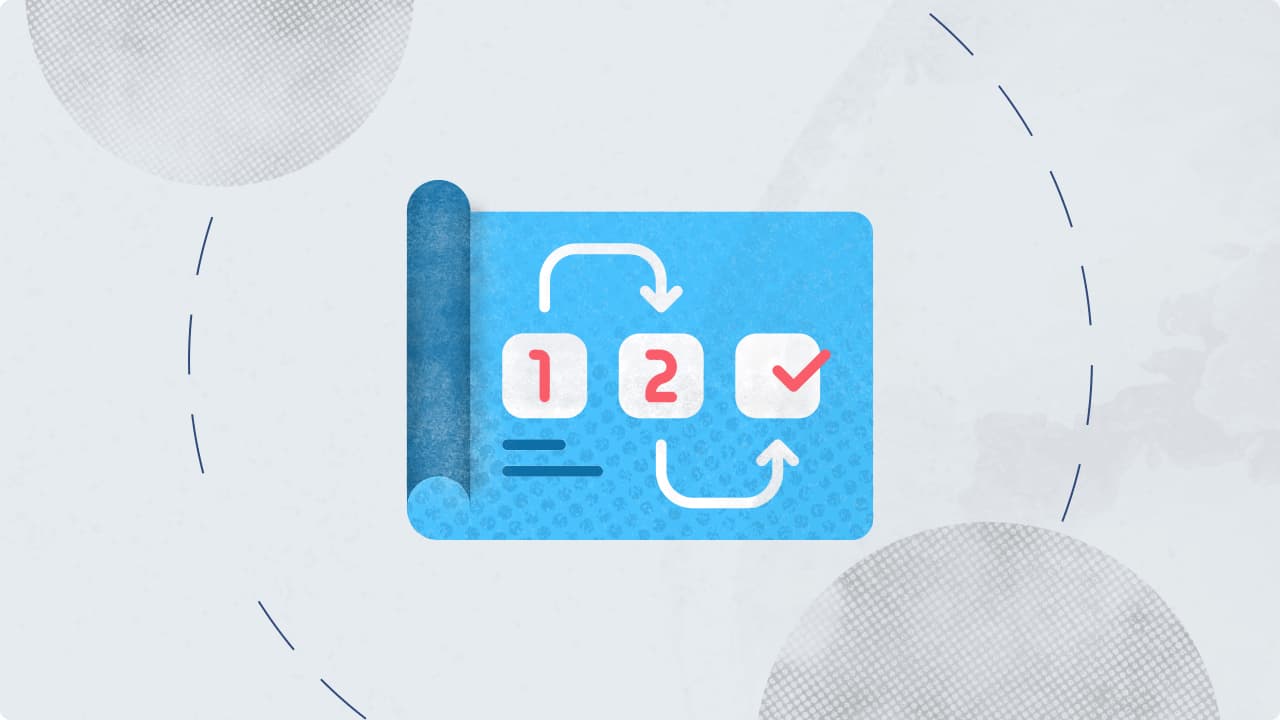There are no shortcuts to winning over a client. It takes a lot of commitment and effort. Additionally, when pursuing a client, you must find a way to coordinate with them on all levels and market the brand as a unit.
A social media proposal is a roadmap you present to a potential client describing how you might assist them in achieving their goals and objectives. It must show that you comprehend the potential client's demands and how you are best suited to meet them.
You face many challenges as an agency, like market competition, providing ROI for your client, creating great content marketing for your accounts, and maintaining good relationships with your clients.
The most important factor in winning over your clients is having a clear understanding and interpretation of the proposal.
Here's an overview of the contents of this article:
- What Is A Social Media Proposal?
- 6-Steps To Write A Social Media Proposal
- Steps To Write The Best Client-Winning Social Media Proposal
- Social Media Proposal Template
- Frequently Asked Questions
You can directly jump to a section of your choice or keep scrolling.
What Is A Social Media Proposal?
A social media marketing proposal is a document that helps you put forward the services you offer and how you can help the clients achieve their social media goals by laying out a plan. Social media proposals are crucial for expanding your agency, so you best be ready to ace them.
A proposal outlines how you intend to use your skills and abilities for the client in a formal letter-like format. For both parties, this will guarantee defined boundaries. It will give you a clear idea of the workload you may expect. In a proposal, you might explain to a prospective client why you are a superior option to your rivals. You can outline the breadth of your knowledge and skills in the proposal.
A straightforward game plan with clarity will help you win over your clients. You may utilize the proposals template to grow and improve your agency business in multiple ways. An Agency social media proposal template is provided towards the end of the blog. Don't forget to check it out!
6-Steps To Write A Social Media Proposal
Before beginning to develop a social media proposal for your client, you should conduct background research and identify methods to improve their business. The idea is to convince the clients that you have the skills necessary to achieve their objectives and that, as a result, they should choose you.
You'll be able to create better and come up with more relevant concepts by researching the market, the rivals, and the positioning of your client's product and brand.
Social media monitoring can help you with online discussions about the product and service related to the client's sector and try to determine how others feel about similar products. Before using time-consuming surveys and focus groups, this is a quick way to conduct market research.

1. Understand Your Client’s Goals
Your proposal won't resonate with your potential client until you meet their needs. It would help if you first comprehended them to do this. You can simplify this process by providing your potential client with a list of questions to answer.
Inquire about any difficulties that your potential client may be experiencing. How have they attempted to address the known issues? Ask them if they have a schedule in place to achieve these objectives as well. Finally, inquire about their spending plan. Getting a sense of the types of challenges, you will be working on during this stage is beneficial.
You can take the following factors into consideration:
- A strategy that worked well
- Social Projects that were successful
- Budget issues
- Existing Social Marketing Calendar
2. Understand Their Target Audience
Understanding your potential client's industry and problems can help you grasp their target market. By doing this, you can determine whether your plan will assist your potential clients in connecting with their audience. Additionally, you can adjust your plan to make it more potent for the target market.
You can ask the client to disclose any audience data they've previously gathered at your initial meetings, such as demographic data, engagement metrics, or channel preferences.
You can also perform your market research to determine whether it agrees with the user data provided, for example, by looking through the company's social media accounts to determine whether their intended audience is their actual audience.

3. Competitor Analysis
Find out who the biggest rivals of your client are and how they manage their social media presence. This can help you discover additional options the target market has for the products/services and provide insight into the audience-targeting strategies the competition uses. Ask the client for a list of at least five of their recognized rivals during your initial meeting. You can do your research on their social media profiles, website traffic, content, and keyword analysis to learn more and identify their advantages.

Image Source - Thoughtworks
4. Conduct Social Media Analysis
Conduct a social media audit on your client's channels. If they already have a solid online presence, you won't need to invest time in growing their platforms. You can use this study to comprehend their existing marketing strategy better and identify potential development areas.
A few details to consider are:
- How frequently do they post?
- The platforms they utilize
- Their most popular articles and blogs
- Organic traffic metrics vs. paid traffic metrics
- Their utilization of commercials and ad-based content
5. Prepare A Social Marketing Strategy
You can sketch a potential social media plan if you understand your client's background, objectives, and goals well. This section demonstrates that you have a workable plan to address their marketing needs and will make up most of your proposal. As you prepare, you can go to the client's mission statement and style guide, as well as their list of inspiring brands, to get ideas for what should be included.
Think about providing just enough information to demonstrate your abilities while avoiding revealing too many specifics that would enable them to implement your suggestions independently.
Throughout the plan, pay attention to the following:
- The project's overall cost
- The particular steps you'll take, like content production and optimizing their social media presence
- The strategic compatibility with the long-term objectives of the client
- Strategic coordination with the client's timetable
6. Evaluation
Managing a client's expectations is crucial to a successful agency-client relationship. It would help to start with an analysis that pinpoints the client's issues.
Clients frequently acknowledge that they require assistance with managing their social media accounts, but they cannot explain their objectives in utilizing social media. This proposal section can, for instance, include an analysis of why the current strategy is ineffective and recent sales numbers if the client wants to employ social media to boost sales.
Steps To Write The Best Client-Winning Social Media Proposal
After completing the initial research, you can move on to more valuable tasks as you begin to draft a high-converting social media strategy proposal.
Front Page
First, the front cover page for your social media proposal needs to be done. The report's title, your client's name, and your complete contact information should all be on the front page. To make it feel more customized, you might put "Social media proposal for (Client name)" and include the client's logo.
Add other mandatory information like:
- Your Name
- Agency Name
- Phone
- Website
- Agency Overview
- Background
- Objective
You can also include information about yourself, such as the Agency overview, background, and objective. You'll be able to connect with the prospect more effectively.
When composing the introduction, bear in mind the following three points:
- Keep your writing respectful.
- To address the prospects directly and build a relationship, use terms like "you," "yours," and "us."
- Mention the targeted goals in detail.
Introduction
Some clients could have already made their particular issues clear. Others may be unsure of their current barrier but have a goal or KPI (Key Performance Indicator) they wish to achieve. The initial objective is to ensure you are familiar with the issue. For the client to believe that a suggested solution will work, they must feel that their problems are understood.
Then, your offer should neatly and successfully answer their problem. Explain how long it will take to achieve each component or phase you suggest. The reader should be able to connect your solution to their issue instantly.
To describe your offer, use precise, non-jargony language. Whatever the solution's level of technicality, the writing must be understandable and audience-focused.
Social Goals
The prospect's social media goals must align with their business goals and objectives. But keep in mind to avoid giving a generalized description of the services you will offer to attain them; instead, go over the KPIs you plan to pursue.
To precisely describe the social media goals you will achieve for your clients, apply the S.M.A.R.T. (Strategic, Measurable, Attainable, Relevant, and Time-bound) goals technique. When setting thoughtful goals, you should include the platform(s), metric(s), and end date.

If your prospect wants to boost social media engagement, then the SMART goal would be: In the next three months, the engagement rate on Facebook and Instagram will be raised by X%.
Prospects will believe you have a thorough awareness of their business demands and the know-how to meet them through social media if you provide them with specific social media goals.
Scope Of Work
The most crucial portion of your proposal is the scope of work. Here, you should detail each service you will offer your client. Everything you suggest here will be based on your conversations with your prospect, the knowledge you gained from them, and social and competitive research.
Do not forget to specify the precise deliverable you will offer. How many Instagram posts will you make? When will the analytics report be made? Make sure everything is understandable and clear.
Choosing the best Social Platform: List the social networks you want to use and explain why they are the best to help them achieve their goals.
Content Production and Curation: Describe the content work you will carry out, such as generating reels, designing photos, writing descriptions, and curating content for a particular niche.
Publishing schedule: Describe how frequently you'll post on a specific social media account and how that activity will affect your entire approach.
Approval Workflow: Mention how every content and post will go through the approval process with the client.
Brand Hashtags: Mention the brand hashtags you'll be following.
Community Building and Audience Engagement: Talk about creating a community for your prospect and specify how frequently you plan to interact with the audience.
Analytics and reporting: Talk about how frequently you'll send analytics reports and what you will monitor.
Feedback Meetings: Highlight the frequency of follow-up meetings with prospects to review their performance and hear their thoughts.
Tools like Statusbrew's collaboration tool could reduce most of your manual work and follow-ups, saving you a lot of time.
Sounds interesting? Try Statusbrew now! ?
Timeline
The timeline provides the client with an estimated completion date for the deliverables. There should be a deadline for each deliverable. Thanks to this information, the client will have context on the timeliness of each item and the speed at which the suggested job may be finished.
The goal is to have a realistic timeframe that is well-defined. Projects frequently take longer than anticipated. Make sure to recognize and directly solve any potential timeline problems. A thorough timeline will demonstrate a detailed awareness of the project's scope and execution.
Because timely deliverables often define the contract and your payment, clarity is essential. Make sure that the client has clear budget expectations through the proposal. This will help you prevent unpleasant conversations or even strained relationships that might arise from confusion about the budget.
Budget
Some people will skim the text and only read the budget, then go back and read the whole. As a result, it needs to be precise, competitive, and simple to comprehend.
Although project and hourly budgets are typical, we advise adopting a fixed-price quote whenever it is practical. It might be challenging for a client to budget for overruns on hourly assignments. You can calculate the project's total cost and openly compare offers with a fixed-price offer.
Whatever the budget type, the overall bid amount should be divided into smaller components.
For instance, a $3,500 offer for Public Relations services for a book launch. Some clients could think this one amount is appropriate, while others might find it startling. Distinguish the charges so that each client is aware of the total.
In this instance, allocate the $3,500: $700 for copywriting, $800 for media relations, $1200 for media training, $500 for planning the book launch, and $300 for administration. Thanks to the extra information, the client can comprehend your solution and value it.
Free Social Media Proposal Template
Download our easy-to-use social media proposal template and create your own within minutes.
Make Your Life Simple With Statusbrew
It's important to create a strong social media proposal if you want to increase your clientele and expand your business. You can make your own social media proposal template by following the thorough instructions provided above.
Or,
To make your life simpler, utilize our free social media proposal template, which is ready to be filled with information. Speaking of which, you can automate social media marketing for your clients using Statusbrew's unmatched scheduling, analytics, and content compiling tools.
Grab Your Free Trial Now!
Frequently Asked Questions
What is the best time to send a social media proposal?
The best TAT (Turn Around Time) is to respond within 4 days of request. The ideal time to send your social media proposal is before 11 am. It helps your prospects to check it when their day starts.
How should you send a social media proposal?
It is always recommended to email your social media proposal. Always use your work email as it establishes credibility.
Can we use the free social media proposal template?
Yes, you can 100% use the free social media proposal template. Make sure to fill in and customize the template based on your clients.




Explore the Statusbrew range of social media tools
Cancel anytime!